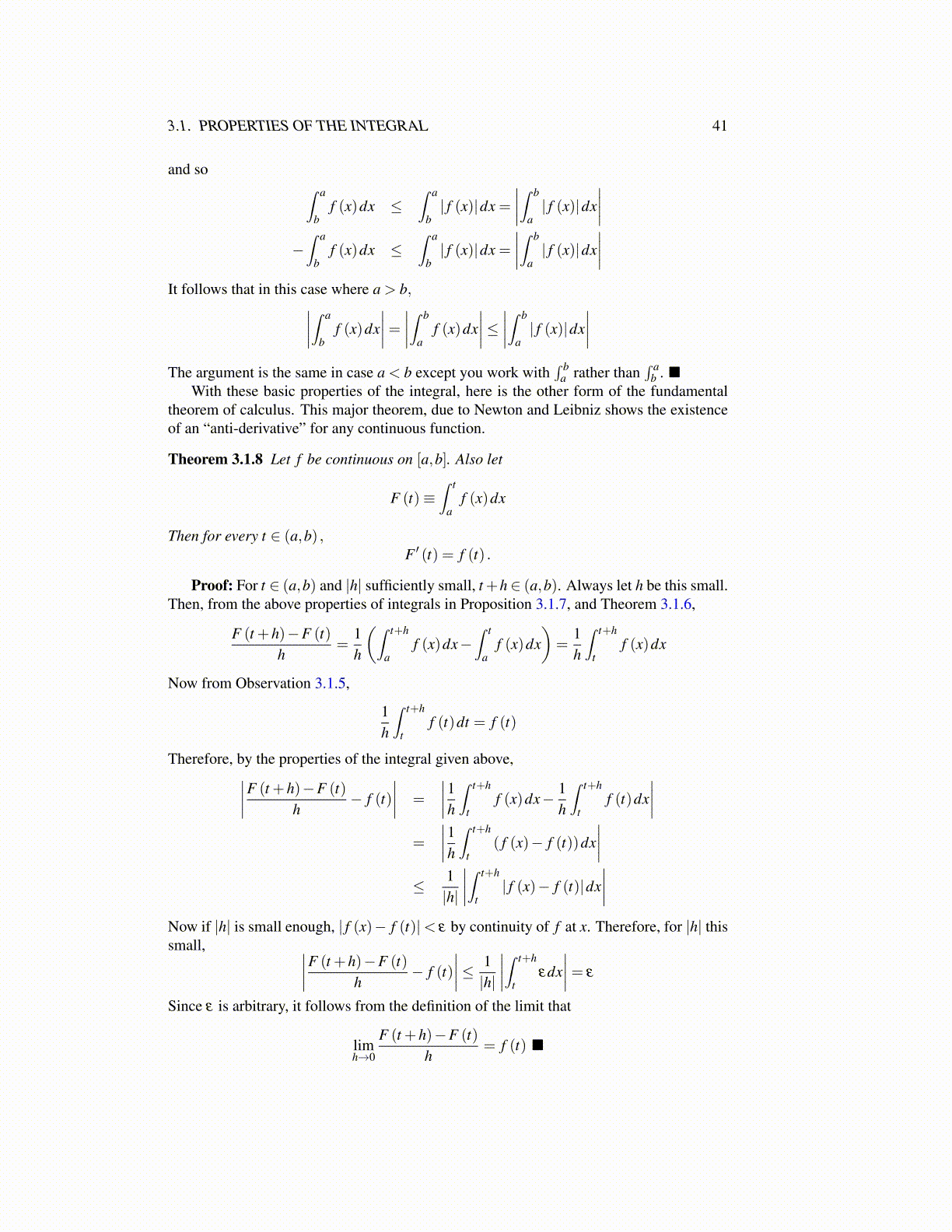
3.1. PROPERTIES OF THE INTEGRAL 41
and so ∫ a
bf (x)dx ≤
∫ a
b| f (x)|dx =
∣∣∣∣∫ b
a| f (x)|dx
∣∣∣∣−∫ a
bf (x)dx ≤
∫ a
b| f (x)|dx =
∣∣∣∣∫ b
a| f (x)|dx
∣∣∣∣It follows that in this case where a > b,∣∣∣∣∫ a
bf (x)dx
∣∣∣∣= ∣∣∣∣∫ b
af (x)dx
∣∣∣∣≤ ∣∣∣∣∫ b
a| f (x)|dx
∣∣∣∣The argument is the same in case a < b except you work with
∫ ba rather than
∫ ab . ■
With these basic properties of the integral, here is the other form of the fundamentaltheorem of calculus. This major theorem, due to Newton and Leibniz shows the existenceof an “anti-derivative” for any continuous function.
Theorem 3.1.8 Let f be continuous on [a,b]. Also let
F (t)≡∫ t
af (x)dx
Then for every t ∈ (a,b) ,F ′ (t) = f (t) .
Proof: For t ∈ (a,b) and |h| sufficiently small, t+h∈ (a,b). Always let h be this small.Then, from the above properties of integrals in Proposition 3.1.7, and Theorem 3.1.6,
F (t +h)−F (t)h
=1h
(∫ t+h
af (x)dx−
∫ t
af (x)dx
)=
1h
∫ t+h
tf (x)dx
Now from Observation 3.1.5,
1h
∫ t+h
tf (t)dt = f (t)
Therefore, by the properties of the integral given above,∣∣∣∣F (t +h)−F (t)h
− f (t)∣∣∣∣ =
∣∣∣∣1h∫ t+h
tf (x)dx− 1
h
∫ t+h
tf (t)dx
∣∣∣∣=
∣∣∣∣1h∫ t+h
t( f (x)− f (t))dx
∣∣∣∣≤ 1|h|
∣∣∣∣∫ t+h
t| f (x)− f (t)|dx
∣∣∣∣Now if |h| is small enough, | f (x)− f (t)|< ε by continuity of f at x. Therefore, for |h| thissmall, ∣∣∣∣F (t +h)−F (t)
h− f (t)
∣∣∣∣≤ 1|h|
∣∣∣∣∫ t+h
tεdx∣∣∣∣= ε
Since ε is arbitrary, it follows from the definition of the limit that
limh→0
F (t +h)−F (t)h
= f (t) ■